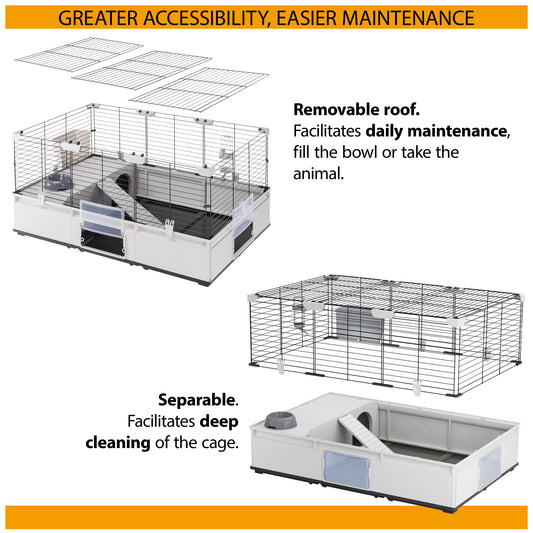Our guide to adopting a new cat
It is estimated that 1.2 million cats find themselves in UK rescue centres every year, so if you are considering adding a cat to your family, you’re sure to find your perfect pet if you go down the adoption route. Each homeless cat has a unique character, background and needs, but they are all looking for the same thing – a loving forever home.
Finding your new furry friend
The best place to start your search for a new cat – whether a kitten or an adult – will be at a local rescue centre. Cats Protection, the RSPCA, Blue Cross and the National Animal Welfare Trust are the biggest charities with centres across the country. They also have photos and profiles of available cats on their websites.
Try to be open-minded about what you are looking for and select a cat based on the best fit for your family rather than just looks. Staff at rescue centres will be able to assist you with your search by asking lots of questions about your home and lifestyle to find the best match.
Once you have chosen a cat that meets your requirements, you can arrange to meet them at the rescue centre. Everyone who will be living with the cat will need to visit to ensure the whole household will be happy with the choice and to rule out the possibility of any allergies.
Make sure you ask plenty of questions to find out as much as possible about your potential pet. Here are some things that you might want to know:
- Are they used to being left alone during the day?
- Have they previously lived with other cats?
- Have they previously lived with dogs?
- Are they used to children?
- Are they generally nervous or confident around people?
- Have they previously been an indoor-only cat?
- Do they know how to use a litter tray?
- Do they have any medical issues that you need to be aware of?
- Is there anything they are scared of?
When you’ve made your decision
When you’ve found a cat that meets your pet requirements and the rescue centre agrees they are a good match, there’s just one more step before cat cuddles – the home visit. Home checks are usually carried out by charity volunteers who are experienced cat owners themselves. They will advise you on how to provide a happy home for your new pet, as well as answering any questions you might have about how to settle them in or general cat care.
Preparing for your pet’s arrival
Cats are reliant on their sense of smell. One way that you can help them get used to you, is to introduce them to your scent before they leave the rescue centre. If you take an item of clothing or a blanket from home to the rescue centre during their last days there, this will allow them to become familiar with your scent and it will help them settle more easily into your home.
Before you pick up your new cat, make sure you set up a quiet, secluded area that your cat can feel safe in while they are getting used to their new home. Provide a comfy, warm bed and places for them to hide in between exploring their new surroundings. Cardboard boxes make great dens for nervous cats!
It is a good idea to have been shopping prior to picking them up so that everything they need is ready and waiting for them. The essentials are:
- A cat carrier to bring your pet home in. They might also like to use this as a den indoors.
- A food bowl.
- A water bowl.
- A supply of food, preferably what they have been eating while in the rescue centre. If you wish to change foods, you should do so gradually over a week or two to avoid an upset stomach.
- A soft, warm bed in a cosy, safe area.
- A litter tray and litter.
- A scratching post.
- Cat toys.
Bringing your cat home
Cats generally don’t enjoy travelling so they may find the journey home stressful. Ensure you have a pet carrier that is sturdy and well-ventilated, and put a cosy blanket inside to help them feel safe. If you’ve previously left a blanket from home at the rescue centre, you should place this inside the carrier for the journey.
Cats are very territorial so will need time to get used to their new surroundings. It’s very important that you let your new cat explore their home at their own pace without interference. It is very common for a cat to hide when they find themselves in a new place. Don’t force them to come out and greet you – instead, sit in the same room as them and talk to them gently until they are feeling confident enough to show themselves. Get down to your cat’s level, call their name quietly whilst offering your hand, and wait for them to come to you.
Exploring the wider world
If your cat is going to have access to the outside, it is important that they make themselves at home first so that you don’t lose them. Cats Protection advises that you wait three to four weeks before introducing them to your garden as by this time they will have spread their scent around the house and know it to be their home. The first time you let your cat out should be just before dinner time so that they’ll be hungry and keen to come back to eat when you call.
Don’t let your cat out if they have not been neutered (to avoid unwanted pregnancies), are not yet up to date with vaccinations or are not microchipped.
Offering a home to a previously unwanted cat can be a very rewarding experience, and with a bit of preparation, patience, and love, you’ll both live happily ever after.
Shop All Cat
If you enjoyed this article, have a look at:









